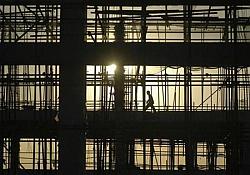 | « Back to article | Print this article |
Last quarter's corporate results confirm worst fears about the growth trajectory. Now, the only way to start a new spiral of growth is to ensure that infrastructure projects do not suffer at the same time as the fiscal deficit stops crowding out private investment through high public borrowing. When the Central Statistics Office pegged India’s growth estimate in 2012-13 at 5 per cent, the government dismissed it. How would policy makers react to India Inc’s results for the third quarter ended December 31, 2012?
When the Central Statistics Office pegged India’s growth estimate in 2012-13 at 5 per cent, the government dismissed it. How would policy makers react to India Inc’s results for the third quarter ended December 31, 2012?
Corporate earnings, excluding financial services and oil and gas companies, touched a new low; net sales growth decelerated for the fourth successive quarter, and its trajectory suggests it may decline further, diminishing hopes of an earnings revival in the near term.
The aggregate revenues for nearly 2,000 companies analysed by this newspaper grew a tad over 5 per cent year-on-year. Adjusted for inflation, this suggests a contraction in the volumes of goods and services produced by companies.
That production volumes have begun to falter is evident from the year-on-year shift in the key components of variable cost. Raw material costs during the quarter were up just 5.1 per cent, lower than wholesale inflation - which means companies were buying less raw material.
Fuel and power costs were flat during the quarter, another sign of decline in business activity.
Variable expenditure grew slower than revenues, indicating that companies still have pricing power in a high-inflation environment - but this was not enough to offset the decline in volumes, and operating margins contracted by 100 basis points sequentially.
Business can manage for a while with stagnant volumes, but alarm bells should start ringing when production starts contracting, forcing factories and establishments to run at levels much lower than their capacity.
If allowed to persist, this could trigger a downward spiral of poor profitability, lower capital expenditure and lower demand for goods and services.
A decline